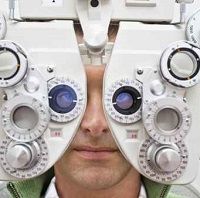In Diabetic Macular Edema Treatment, Addition of Diclofenac Reduced Central Macular Thickness
Although differences between treatment groups in best-corrected visual acuity were not statistically significant, combination treatment reduced central macular thickness and macular volume statistically significantly more than bevacizumab alone.

In treatment-naïve patients with diabetic macular edema (DME), researchers in Tehran, Iran, recently found that intravitreal injection of the nonsteroidal anti-inflammatory agent diclofenac produced better functional but not anatomic results than intravitreal injection of the anti-vascular endothelial growth factor agent bevacizumab (Avastin/Roche). They therefore recommended using diclofenac as an adjunct to other treatments such as bevacizumab. However, whether adding these two agents with different mechanisms of action would provide superior results to those of bevacizumab alone was unknown.
To compare the short-term effects of a single intravitreal injection of bevacizumab plus diclofenac with those of bevacizumab alone for DME, a team of researchers at Feiz Hospital, Isfahan University of Medical Sciences, Isfahan, Iran, studied 80 treatment-naïve eyes with DME in a prospective, randomized clinical trial.
Each eye received either bevacizumab, 1.25 mg, plus diclofenac, 300 μg/0.1 mL, or bevacizumab, 1.25 mg, via intravitreal injection; 38 eyes received bevacizumab alone, and 42 eyes received combination treatment.
The researchers then assessed change in best-corrected visual acuity (BCVA) in logMAR from baseline to week 4 (primary outcome measure). Secondary outcome measures included central macular thickness, macular volume, and injection-related complications.
At week 4, the researchers noted that BCVA had improved in both treatment groups. Mean reduction in logMAR was −0.09 ± 0.28 in the bevacizumab-only group vs. −0.23 ± 0.33 in the combination treatment group. However, although combination therapy produced greater improvement in BCVA than bevacizumab alone, this difference was not statistically significant (P = 0.16).
This was not the case for changes in central macular thickness. When the team compared these changes between treatment groups, they noted that combination treatment reduced central macular thickness significantly more than bevacizumab alone (mean reduction: bevacizumab, 82.43 ± 160.09 μm vs. combination, 153.26 ± 163.85 μm; P = 0.04). They noted similar results for macular volume.
Moreover, they reported that no injection-related complications or clinically significant changes in intraocular pressure occurred in either treatment group.
These results led the researchers to conclude that in treatment-naïve eyes with DME, bevacizumab plus diclofenac may be superior to bevacizumab monotherapy, particularly in terms of anatomic results. They also reported that they are using diclofenac as an adjunct to bevacizumab in their clinical practice.
Related Coverage:
Diabetic Macular Edema Drugs Compared
Lucentis Shown to Improve Diabetic Macular Edema Resistant to Other Therapies
Diabetic Macular Edema Drugs: Do the Prices Outweigh the Benefits?